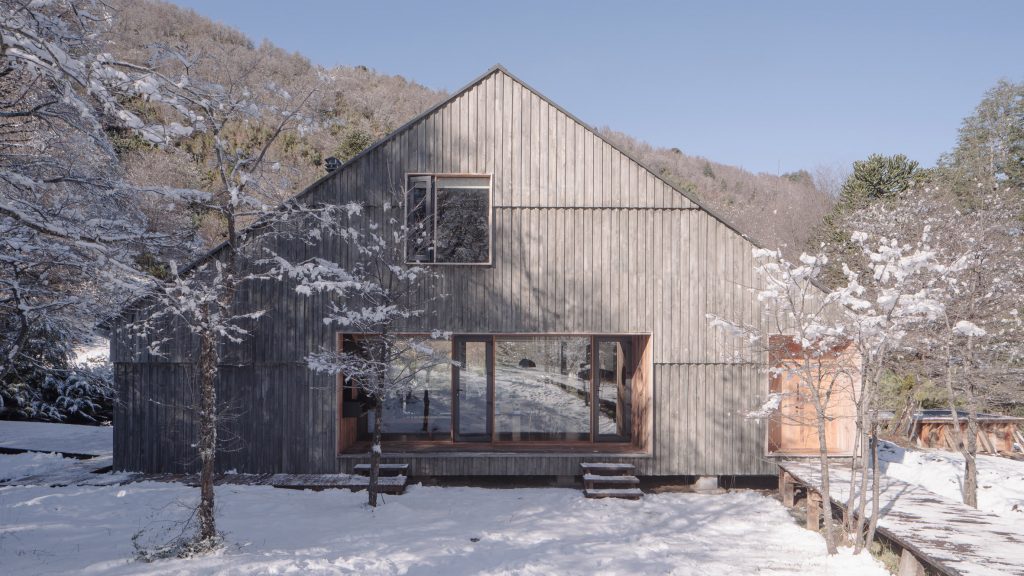[ad_1]
Beaucarnea recurvata
Have you been wanting to grow a palm in your home, but wondering if you could keep up with the misting and watering required to satisfy the typical palm’s need for moisture?
If so, here’s a plant for you!
The ponytail palm, Beaucarnea recurvata, has tropical-style foliage, but doesn’t require a wet environment to thrive.
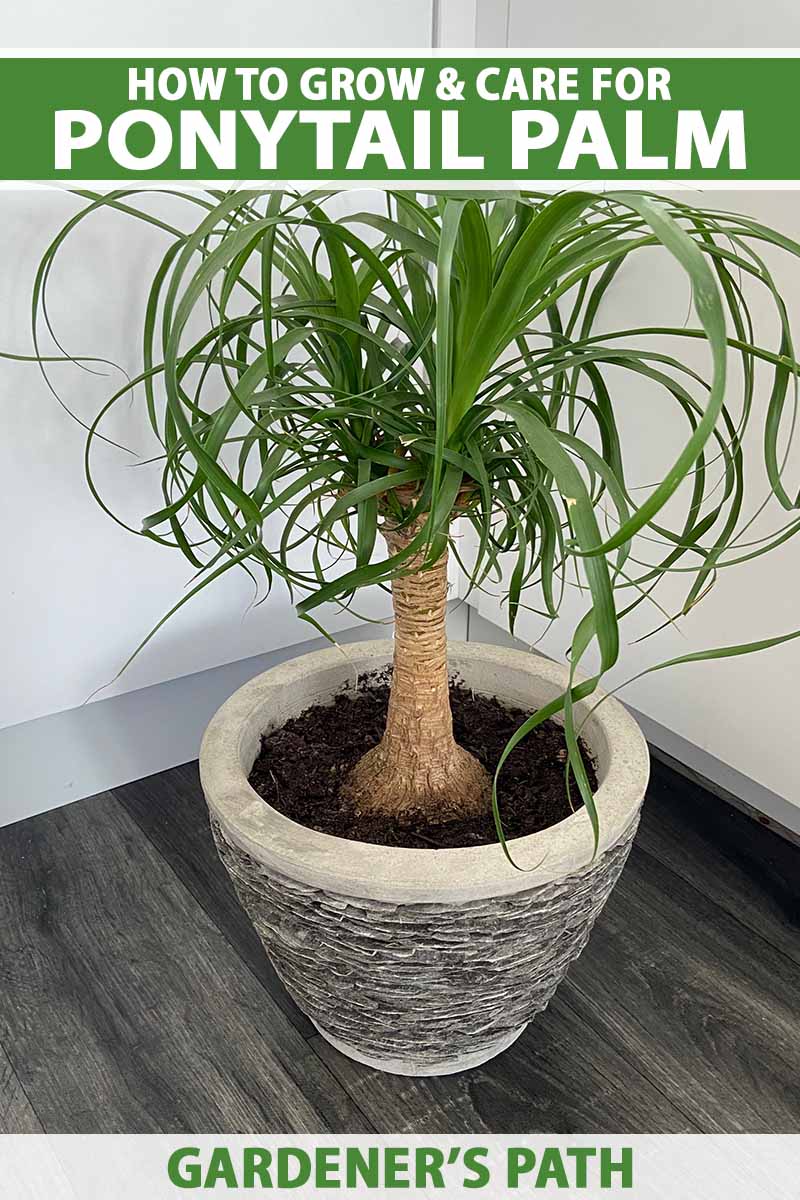
We link to vendors to help you find relevant products. If you buy from one of our links, we may earn a commission.
In this article, we’ll introduce you to this unique plant, and provide guidance for its cultivation indoors.
Here’s what’s in store:
Let’s dive in and see what makes this species so special.
What Is a Ponytail Palm?
Evergreen ponytail palm, Beaucarnea recurvata, is not actually a palm, but a succulent in the Asparagaceae family that also includes agave and asparagus.
It is suited to outdoor cultivation in warm, dry regions of USDA Hardiness Zones 10 and 11. But it is also an exceptionally attractive, easy-care houseplant in all zones.
Native to semi-desert locales of southeastern Mexico and Central America, the most noteworthy features of this species are its caudex and its recurved evergreen foliage.
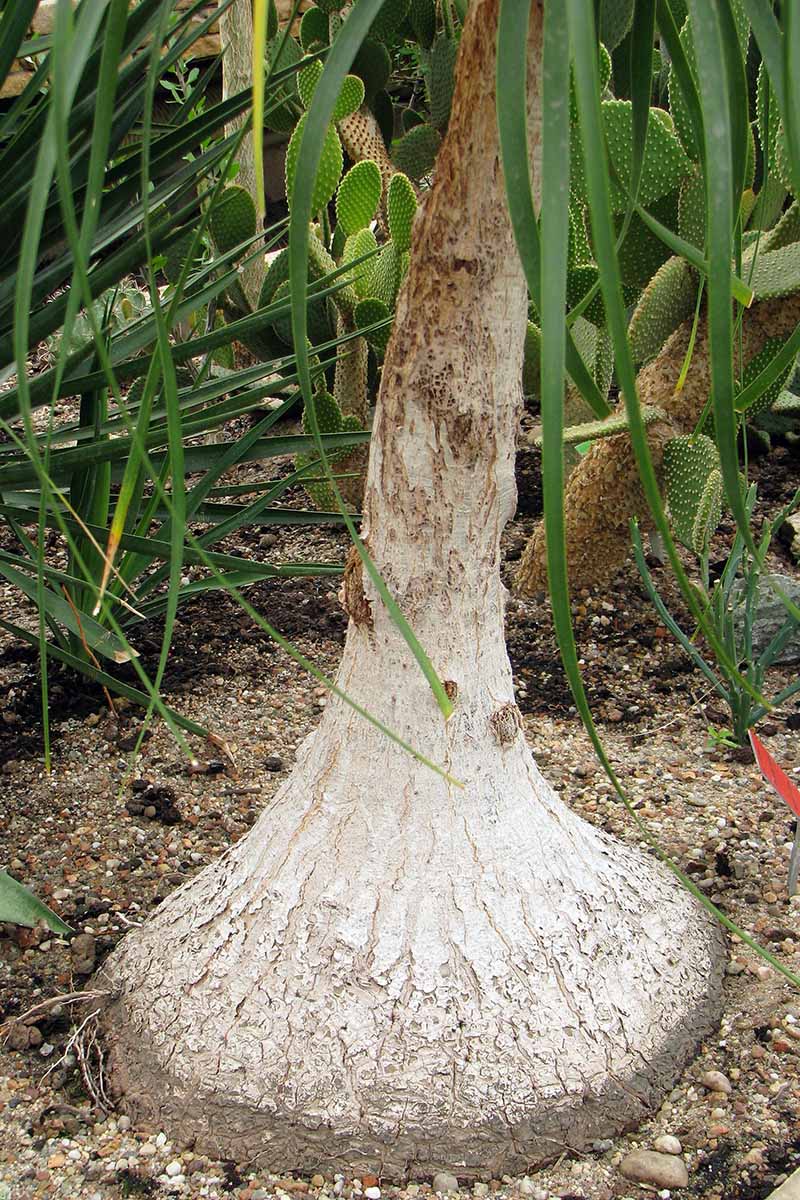
A caudex is an enlargement at the base of a woody plant’s trunk that stores water. It’s the signature trait of what are called “caudiciform” plants. This growth habit is the basis for ponytail palm’s other names, bottle palm tree and elephant-foot tree.
There may be one or more trunks with branches from which serrated “recurved” leaves sprout.
This characteristic backward, downward bend gives the foliage a fountain-like display that resembles a ponytail. The leaves range from one to five feet in length.
In nature, trees may reach a mature height of 30 feet tall. Potted, they may grow as tall as eight feet, but are more likely to top out at around four.
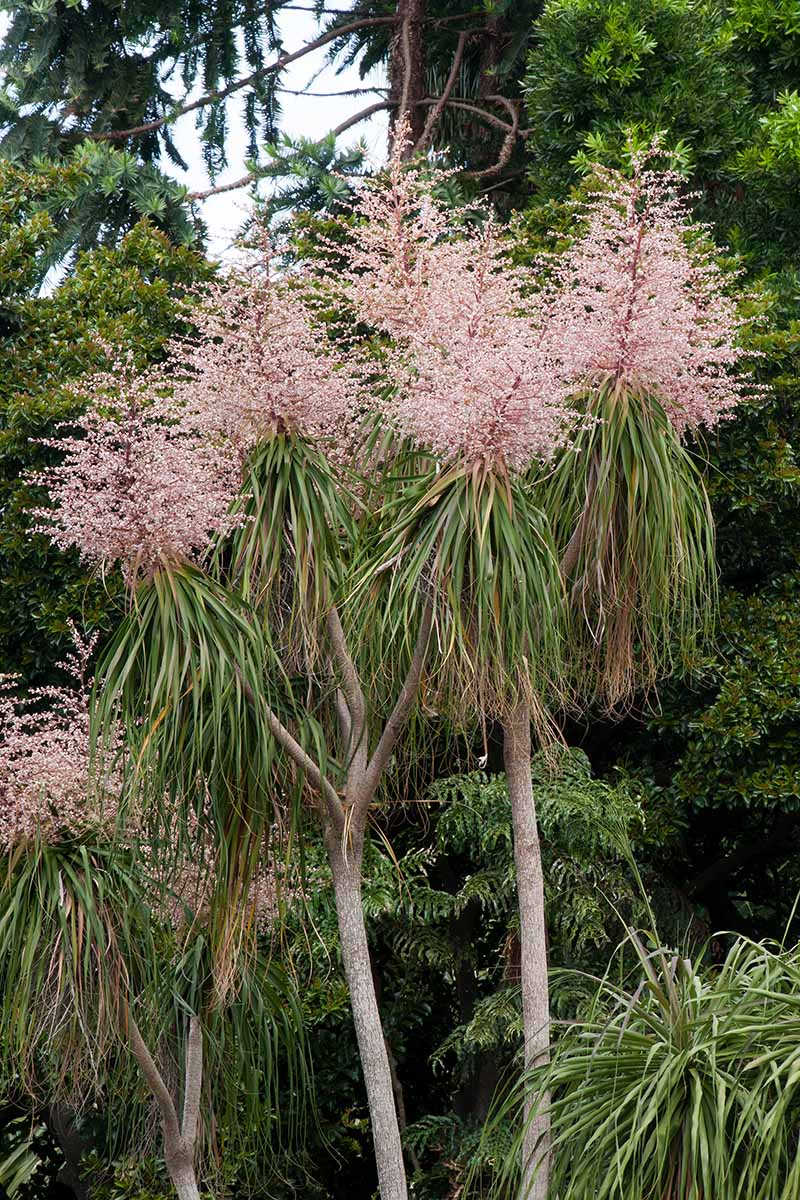
B. recurvata is a dioecious plant, meaning that there are both males and females. The males have cream-colored flowers, and those of the females are more pinkish.
When mature, this species has the potential to flower. However, it may not happen for 10 or 20 years. It seems that the larger the caudex grows, the more likely the plant is to flower. Once it blooms the first time, it will likely do so two to three times per growing season thereafter.
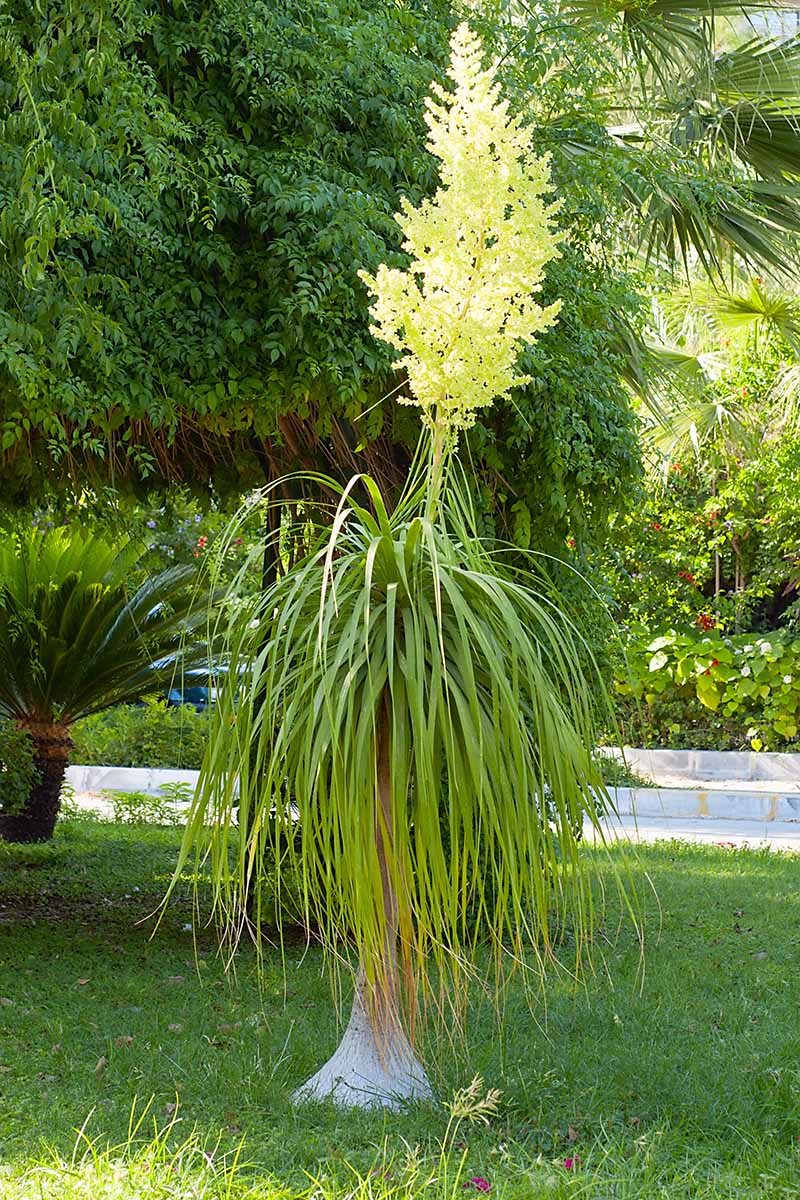
Unfortunately, because caudex growth is restricted, container plants are unlikely to flower.
In addition to the ponytail palm, there are 12 other species in the Beaucarnea genus. Three of these are similar to our subject species: the stiff-leaved B. stricta, the slender, bluish-leaved B. gracilis, and the red ponytail palm, B. guatemalensis.
Cultivation and History
B. recurvata was just another wild tree in Mexico and points south, when it undoubtedly caught the attention of plant hunters in the 1800s, who brought it back to Europe for botanical study and development.
By the late 1800s, it was an established ornamental parlor plant in Europe, and today it enjoys popularity in the United States.
Unfortunately this species is now classified as threatened in its natural habitat, and it is found growing wild almost exclusively in Veracruz, in eastern Mexico.
Propagation
The simplest way to get started with a ponytail palm is to purchase a potted nursery plant from your local garden center or online.
You can also start with an offset that is cut from an existing plant, or from seed.
Offset Division
If you are lucky enough to have a friend with a plant, watch for the growth of one or more small offshoots from the main plant.
These baby plants, or “pups” as they are called, can be separated from the mother when they are at least four inches tall, and transplanted for individual growing. They may also be left in place for a multi-stemmed, multi-caudex specimen.
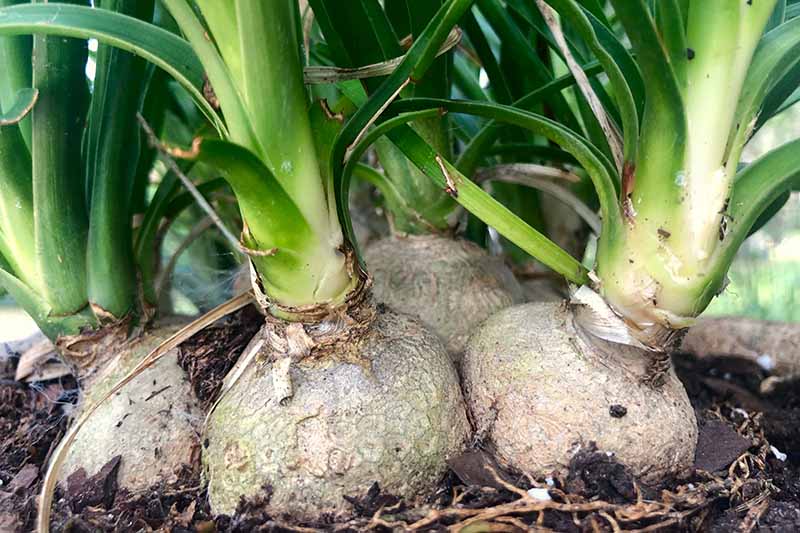
To separate a pup, first unpot the plant and place it on its side.
Using a sharp, sanitary knife, like a hori hori, make a cut straight down between the mother and pup, right through the roots, to separate the main plant from the offshoot.
Replant the mother. Plant the pup in a pot that’s two inches larger than the caudex, filled three-quarters full with a well-draining cactus and succulent potting mix.
From a Nursery Plant
Nursery plants are available in various sizes. The larger the plant, the higher the cost, because it has received more nurturing by professionals.
Regardless of size, you’ll want to examine the plant to see if roots are poking out through the drainage holes at the bottom of the pot. If so, the plant may be “root bound,” and need repotting.
If not, you may be tempted to leave it in its nursery container. However, if it is made from plastic, it’s best to move the plant to a porous container to provide better air exchange and less chance of rotting from oversaturation, the nemesis of this water-wise plant.
Be sure to set it in the new pot at the same depth it was in the nursery pot.
From Seed
Ponytail palm is dioecious, which means that only the female plants will set seed, and the flowers require pollination from a male plant. Houseplants are unlikely to bloom, because of the restriction of the caudex by a container.
However, outdoor female plants that have been successfully pollinated are a source of seed to harvest when it’s dry in the fall.
To sow seeds, first gently scarify them, or rub them lightly with something abrasive, like a nail file. Then soak them overnight before planting.
Fill standard, three-inch seed starter cells three-quarters full of cactus and succulent potting medium.
Sow one scarified, soaked seed per cell, at a depth of one-eighth of an inch.
Set the cells on a tray near a bright window in a 70⁰F room. You can also use a heat mat to maintain an even temperature.
Cover the seeded cells with a sheet of plastic wrap to create a mini-greenhouse during germination. Be sure it is laid loosely over them, so air can still circulate.
The plastic helps to keep the potting mix moist. Water when the top of the soil is dry to the touch, but don’t let it completely dry out.
Expect sprouting anywhere from three weeks to several months.
After germination, remove the plastic wrap and continue to water when the top of the soil dries out, but avoid oversaturation.
When the seedlings have multiple sets of true leaves, they are ready for transplant to larger pots. This is a plant that likes to fit snugly in a pot, with only about two inches of space around it.
Also, this plant grows wider and taller in accordance with the size of the pot it’s in, so, the smaller the pot, the smaller the plant.
When it becomes so root bound the roots protrude from the pot’s drainage hole(s), it’s time to go up a size.
How to Grow
Regardless of how you start your plant, a loose, airy soil mixture that drains well is essential. The ideal pH is a fairly neutral 6.5 to 7.5.
Here’s one you may want to try.

Espoma Organic Cactus Mix
This cactus potting medium contains a patented blend of mycorrhizae, which are fungi that exist symbiotically with roots, improving their ability to take up essential nutrients and water.
This product also retains needed moisture without compaction, allowing roots to breathe and absorb nutrients.
Find Espoma Organic Cactus Mix from the Espoma Store via Amazon now in 2.5-pound packages.
The pot you select should be porous, to reduce moisture buildup that can cause the roots to rot. Good options are terra cotta and unglazed ceramic vessels.
Although this plant looks like a tropical palm tree, we know that its natural habitat is not lush, but arid.
Instead of a humid, misty environment, it requires one that is dry, like a cactus or succulent prefers.
Choose a location with bright, but indirect light to avoid leaf damage. Direct sunlight can be quite intense, especially through window glass, and can cause foliage to scorch.

The ideal temperature for growing B. recurvata is about 70°F during the growing season, and about 50°F during winter dormancy. Houseplants may be moved outdoors as the temperature warms up in late spring to early summer, and taken indoors again in the fall.
If you decide to give your houseplant a summer vacation in the yard, acclimate it gradually to the outdoors. Place it in a sheltered location for a few hours each day. Do this for four to five days before placing it in the landscape or on the patio full-time.
Plants that spend the summer outdoors enjoy the rejuvenation of fresh air and sunshine, as well as deep, soaking rain reminiscent of their native habitat, which serves to keep the roots supple and able to take up nutrients.
In humid regions, plants may be better off staying indoors for the summer, as they will be more prone to diseases caused by excessive moisture we’ll mention shortly.
Keep in mind that this plant is like a cactus, and it’s better to err on the side of neglect than to overwater.
The caudex is a water-storing marvel that enables this palm to endure semi-desert conditions, tolerating drought, and going a few weeks without supplemental moisture.
When watering, be sure that the soil has dried out completely since the last time you got out your watering can.
For a houseplant that’s small enough to lift, take it to the sink, and water until it runs out of the drainage hole(s), to thoroughly saturate the roots.
Water a second time, and when the dripping stops, return the potted palm to its regular location.
This second watering ensures that there are no dry air pockets.
Apply a liquid cactus and succulent liquid plant food at planting time, and each spring.
Let your palm remain in a snug-fitting pot until its roots are so dense that they become root bound and peek out from the bottom of the pot.
With this slow-growing species, it may be years before crowded roots are an issue. On the other hand, it’s possible to purchase a nursery plant that is bursting at the seams and needs to be put in a larger pot right away.
The best time to repot is in early spring, before the growing season gets underway.
Conversely, instead of stunting growth by limiting root space, some folks prefer to encourage maximum growth by putting their plant in a very large pot that exceeds the snug two-inches-to-spare fit.
The downside of not having a close fit is that the extra potting mix in the large pot may take so long to dry out, the roots may rot.
As a houseplant that can achieve a height of eight feet given room to continually increase the size of its caudex, it bears noting that there may come a time when the pot becomes too unwieldy to move. A wheeled caddy may be of use at this point.
Growing Tips
To ensure success, keep the following in mind as you begin the adventure of growing a ponytail palm:
- Use a loose cactus and succulent potting mix for adequate moisture retention and drainage.
- Provide a temperate location with bright, indirect sunlight for warmth and the avoidance of scorching.
- Water when the soil has had a chance to dry out, and fertilize at planting time and every spring.
- Repot in the spring only when the roots are extremely bound.
Pruning and Maintenance
Ponytail palm does not require pruning, but sometimes the tips or the entire leaves may turn brown.

If you find this to be aesthetically displeasing, you can cut off the offending foliage as near to its point of origin as possible, to avoid leaving partially cut stems with a “chopped” look.
If you find yourself pruning brown foliage, consider the source of the desiccation. Are the leaves being scorched by direct sunlight? Are you underwatering?
Underwatered foliage may turn yellow and then brown, as it dries out. The trunk may begin to shrink with the moisture deficit.
Excess moisture can cause the leaves to droop and turn yellow. If it persists, the trunk may soften.
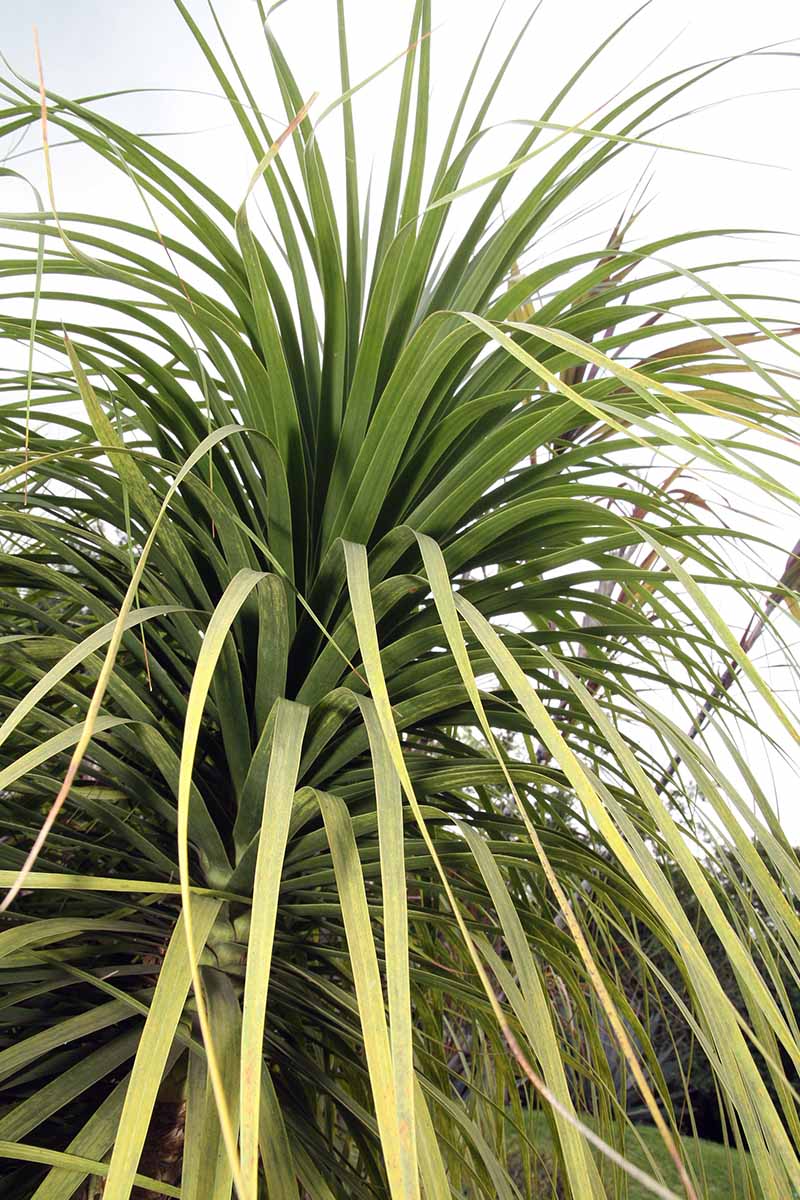
In addition to pruning that removes dry foliage, you may want to try your hand at bonsai.
A ponytail palm is a great candidate for the ancient Asian art of miniaturizing trees with selective pruning to stunt growth while preserving natural forms.
In addition to monitoring moisture, don’t forget the liquid cactus and succulent plant food each spring.
Some folks feed their plants every two weeks or so throughout the growing season, but this is counterproductive if you’re trying to keep your plant small.
Where to Buy
Potted ponytail palms are readily available for home cultivation. Fast Growing Trees carries starter plants in six-inch pots and larger specimens in three-gallon containers.
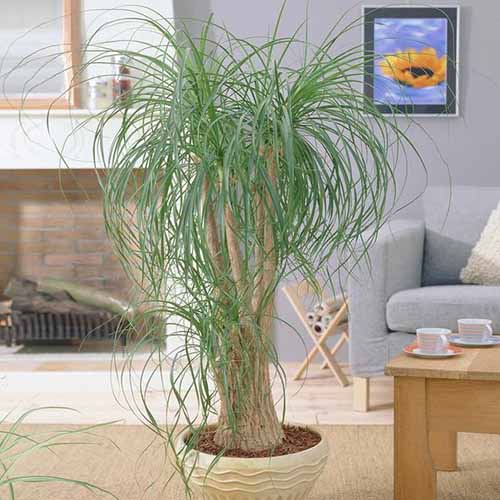
Ponytail Palm
Upon receipt, gently remove the plant from the nursery starter pot, and transplant it to a porous, well-draining container filled three-quarters full of cactus and succulent potting mix.
The pot should fit snugly, and be about two inches wider than the width of the basal caudex.
You can find ponytail palms in six-inch or three-gallon pots available from Fast Growing Trees.
Managing Pests and Disease
Outdoors, container plants are less likely to suffer from pest and disease issues.
Houseplants, on the other hand, especially those that are over- or under-watered and those in humid locations, are more susceptible.
Common pests that favor dry indoor environments include mealybugs, scale, and spider mites. Caught early, all generally respond to a treatment or two with organic neem oil.
Diseases that may affect ponytail palms include bacterial leaf streak, Botrytis blight, and stem rot. They are exacerbated by high humidity.
Quick Reference Growing Guide
| Plant Type: | Evergreen succulent | Flower/Foliage Color: | Male: cream; female: pink / green |
| Native to: | Central America and southeastern Mexico | Tolerance: | Drought |
| Hardiness (USDA Zone): | 10-11 | Maintenance: | Low |
| Exposure: | Bright, indirect light | Soil Type: | Gritty, sandy |
| Time to Maturity: | 10 years | Soil pH: | 6.0-7.5 |
| Planting Depth: | 1/8 inch (seed), same depth as nursery pot (transplants) | Soil Drainage: | Well-draining |
| Height: | 4-8 feet | Order: | Asparagales |
| Spread: | 3-5 foot | Family: | Asparagaceae |
| Growth Rate: | Slow | Genus: | Beaucarnea |
| Common Pests and Disease: | Mealybugs, scale, spider mites; bacterial leaf streak, Botrytis blight, and stem rot | Species: | Recurvata |
Ponytail Palm Fits the Bill
In addition to being easy to grow, low-maintenance, and water-wise, ponytail palms are nontoxic to cats, dogs, and horses, so feel free to cultivate it near your animal friends.
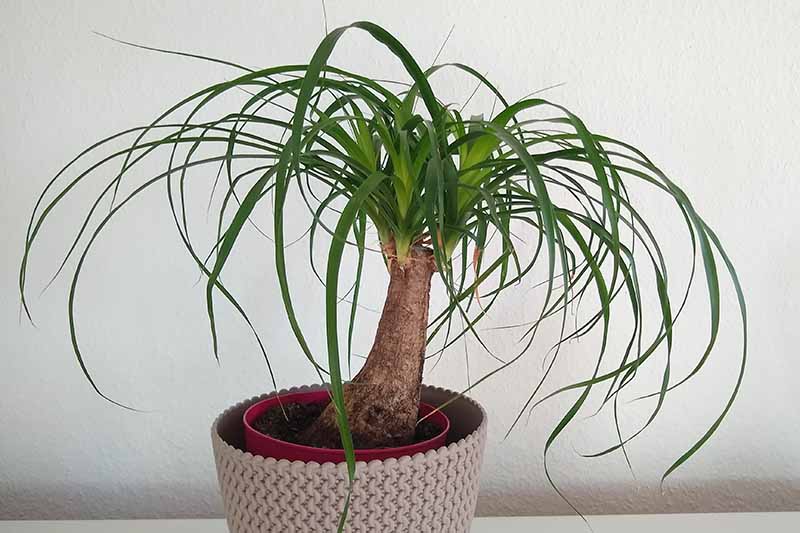
Long-lived, this ornamental species matures in about 10 years. By that time, it can withstand temperatures as low as 40°F. Avoiding frost exposure is essential for potted specimens taken outdoors in regions that freeze.
Have you always wanted to grow a palm, but don’t live in a warm zone for outdoor planting, nor do you want a houseplant that needs the thrice-weekly watering typical of many palms?
Give a ponytail palm a try!
While it’s not a true palm, the combination of tropical-style leaves and cactus-like moisture needs may be just what you’re looking for.
Add ponytail palm to your houseplant collection today and get ready to enjoy a fountain of evergreen foliage for decades to come.
Are you growing ponytail palm? Let us know in the comments section below – and feel free to share a picture!
If you enjoyed reading about this plant and would like to learn about more plants that can be grown and enjoyed indoors, we suggest the following:
About Nan Schiller
Nan Schiller is a writer with deep roots in the soil of southeastern Pennsylvania. Her background includes landscape and floral design, a BS in business from Villanova University, and a Certificate of Merit in floral design from Longwood Gardens. An advocate of organic gardening with native plants, she’s always got dirt under her nails and freckles on her nose. With wit and hopefully some wisdom, she shares what she’s learned and is always ready to dig into a new project!
[ad_2]
Source link

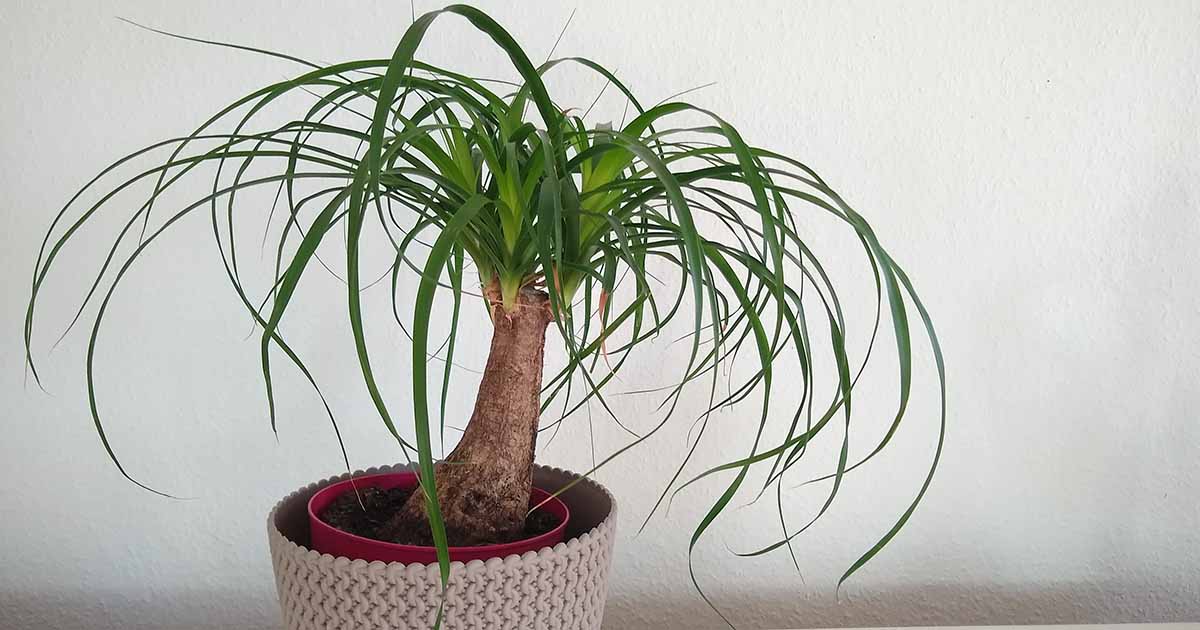






 + Planting String of Watermelon Succulents
+ Planting String of Watermelon Succulents  with Garden Answer
with Garden Answer
